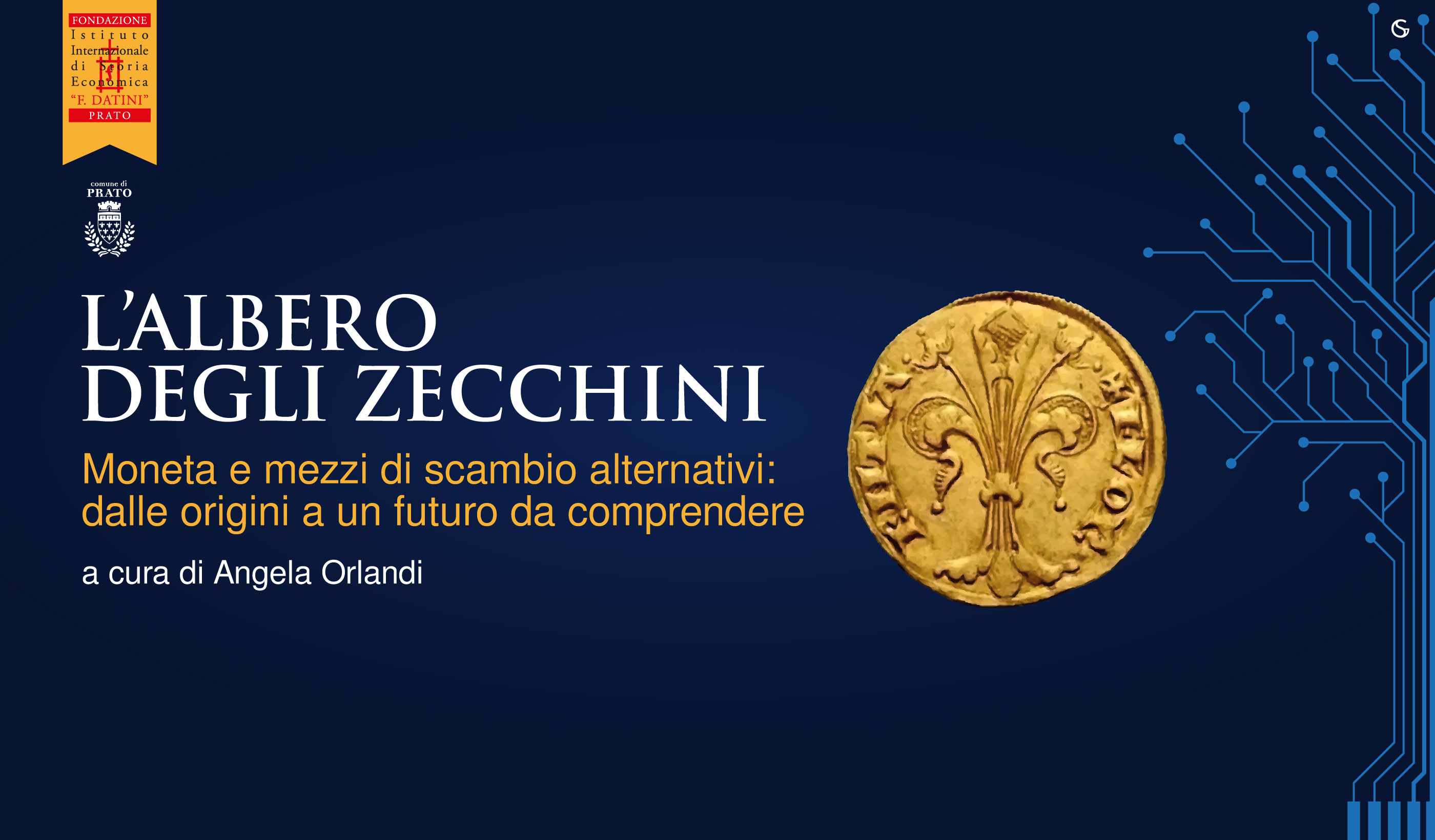An exhibition curated by Angela Orlandi (University of Florence) for the Fondazione Istituto Internazionale di Storia Economica 'F. Datini' in Prato.
This unusual exhibition at the Palazzo Pretorio Museum in Prato recounts key moments in the long history of money. Its title pays homage to the genius of Carlo Collodi, creator of Pinocchio, and we may imagine the tree of sequins as a magical bearer of money and other mediums of exchange. It is also an ambiguous symbol of the ingenuity that has enabled human societies to create currencies as well as their alternatives.
Several institutions have contributed to the exhibition. MUDEM, the Money Museum, has contributed objects and artefacts from its own Voltolina collection. Many of them are forms of pre-coinage money, such as the cowry shells that are commonly found all over the world, as well as items from specific civilizations, such as the miniature swords, porcelain tokens and mother of pearl tesserae used in China, Japan, Korea and Thailand, or the fishing hooks, sperm whale teeth, and shell pendants and necklaces from Oceania, or anklets, bracelets and fine metal crafts from Africa, and obsidian spearheads and plaited tobacco leaves from the Americas.
In time, people realized that precious metals made the most suitable mediums of exchange, as they were easily recognizable and tradeable. The introduction of minted money is represented by a stater from Aegina, a coin that was in use between the sixth and fourth century bce (MUDEM-Bank of Italy, Rome). The most significant monetary reform in European history, however, came with Charlemagne, who introduced a standardized monetary system based on the silver denier. Thus, the Carolingian pound (libra) emerged in the eighth century ce. It was never actually minted, but existed as a unit of account worth 240 silver deniers. European monetary systems would be modelled on the libra until the introduction of the euro.
The exhibition continues by exploring this complex history. With the Commercial Revolution came sustained economic growth, which in turn created the need for coins of greater value. That's why gold coins were reintroduced. The first city to mint gold was Florence, with its florin in 1252, soon to be followed by Genoa and Venice. Numerous pieces of shining silver and gold here on display are on loan from the heirs of Mario Bernocchi (private collection, Prato).
The exhibition explains how the powerful Tuscan textile industry mechanism largely drove the return to gold. It does so with the aid of a cloth cloak (fashioned in the style of the time by experts at the Textiles Museum in Prato) and of original cloth samples from the late fourteenth and early fifteenth centuries, which would be originally enclosed with the business letters sent out to manage orders for textiles. The wool samples on display come from the Francesco Datini collection at the Archivio di Stato in Prato, which also holds some of the earliest examples of alternative means of payment. This move towards credit instruments signalled a departure from the conception that a currency could only exist in the shape precious metal coins whose value was guaranteed by the integrity of the metal. When precious metals such as silver and gold became too scarce to sustain the growing demand for coins, however, alternatives to minted money had to be found. This shift was facilitated by increasing levels of trust between economic operators, which made it possible to start using written notes of credit instead of exchanging money. Visitors will be amazed by the sophistication of fourteenth-century bills of exchange (analogous to today's money transfers), and by the withdrawal orders and bank cheques commonly used in Tuscany between the fourteenth and sixteenth centuries.
Bank cheques may well have been the European precursors of banknotes, and visitors will be able to see on display the first bearer bonds issued in Italy in 1746 by the Royal Finance Department of Turin (Bank of Italy Money Museum, Rome).
The last part of the exhibition looks into the future. The multimedia lab of the University of Florence has made an interesting video about dematerialized money, covering debit and credit cards, cryptocurrencies, and finishing with the idea of creating a Central Bank Digital Currency.
The tree of sequins. Money and alternative mediums of exchange. From their origins to an unknown future. Prato, Museo di Palazzo Pretorio, from 14 May 2023 to 6 January 2024.







